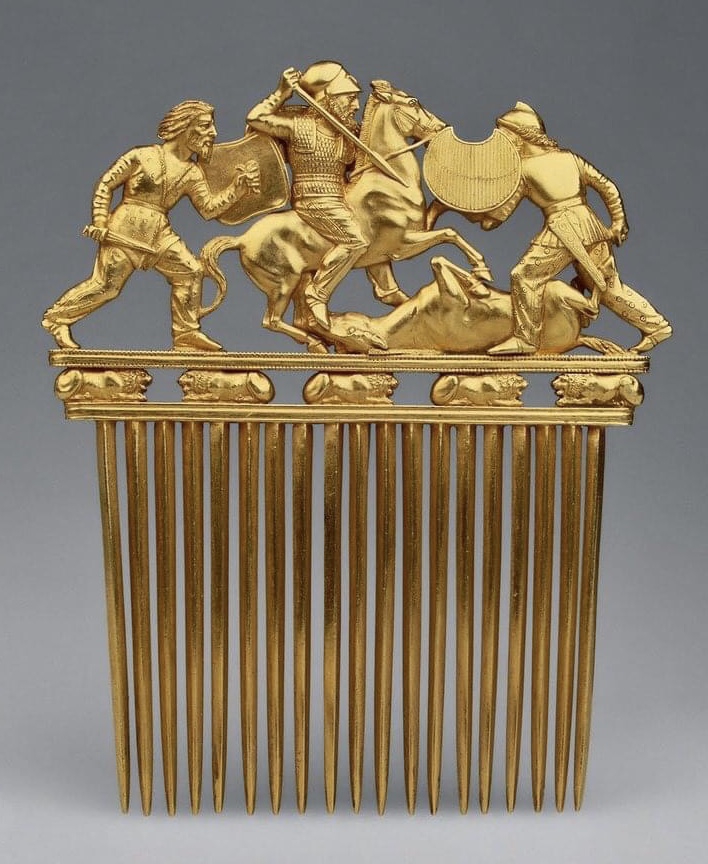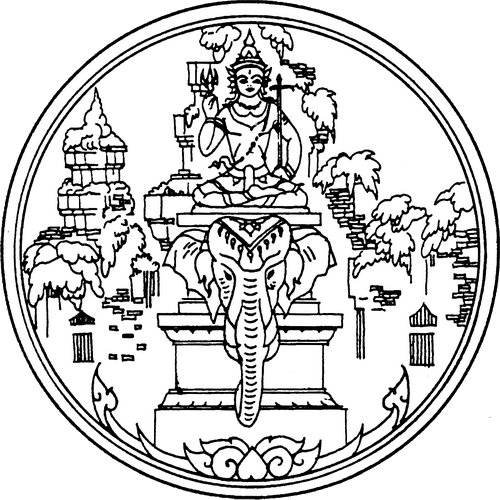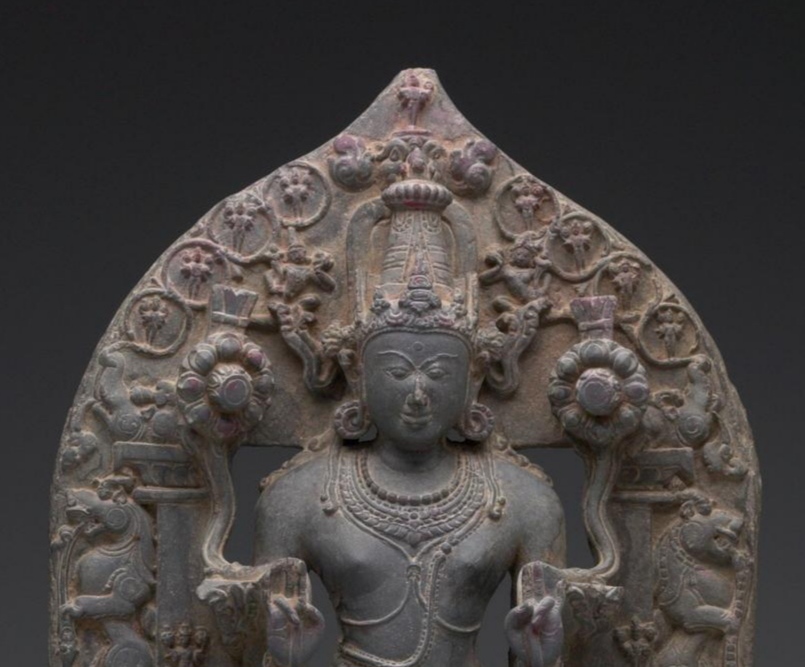|
Mitra–Varuna
Mitra and Varuna (Sanskrit: ) are two deities frequently referred to in the ancient Indian scripture of the Rigveda. They are both considered Ādityas, meaning sons of Aditi; and they are protectors of the righteous order of Ṛta. Their connection is so close that they are frequently linked in the dvandva compound Mitra–Varuna. ''Mitra-Varuna'' is also the title of a 1940 essay in Proto-Indo-European mythology by Georges Dumézil. See also * Mitra (Vedic) * Varuna Varuna (; , ) is a Hindu god. He is one of the earliest deities in pantheon, whose role underwent a significant transformation from the Vedic to the Puranic periods. In the early Vedic era, Varuna is seen as the god-sovereign, ruling the sky ... Mitra-Varuna References Adityas Hindu gods LGBTQ themes in mythology Love and lust gods Mitra Varuna Mythological duos LGBTQ and Hinduism {{Hindu-theo-stub ... [...More Info...] [...Related Items...] OR: [Wikipedia] [Google] [Baidu] |
Varuna
Varuna (; , ) is a Hindu god. He is one of the earliest deities in pantheon, whose role underwent a significant transformation from the Vedic to the Puranic periods. In the early Vedic era, Varuna is seen as the god-sovereign, ruling the sky and embodying divine authority. He is also mentioned as the king of asuras, who gained the status of a deva, serving as the chief of the Adityas, a group of celestial deities. He maintains truth and ''ṛta'', the cosmic and moral order, and was invoked as an omniscient ethical judge, with the stars symbolizing his watchful eyes or spies. Frequently paired with Mitra, Varuna represents the magical and speculative aspects of sovereignty, overseeing the relationship between gods and humans. The transition from the Vedic to later periods saw Varuna's domain begin to shift from the firmament to waters. He became associated with celestial waters, marking the initial phase of his transformation. By the time of the '' Itihasa-Purana'', Varuna ha ... [...More Info...] [...Related Items...] OR: [Wikipedia] [Google] [Baidu] |
Mitra (Hindu God)
Mitra ( ) is a Deva (Hinduism), Hindu god and generally one of the Adityas (the sons of the goddess Aditi), though his role has changed over time. In the #inscrip, Mitanni inscription, Mitra is invoked as one of the protectors of treaties. In the Rigveda, Mitra appears primarily in the ''dvandva'' compound ''Mitra-Varuna'', which has essentially the same attributes as the god Varuna alone, e.g. as the principal guardian of "Truth, Order". In the late Vedic texts and the Brahmana, ''Brahmana''s, Mitra is increasingly associated with the light of dawn and the morning sun (while Varuna becomes associated with the evening, and ultimately the night). In the post-Vedic texts – in which Mitra practically disappears – Mitra evolved into the patron divinity of friendship, and because he is "friend", abhors all violence, even when sacred. Onomastics The Indo-Iranian languages, Indo-Iranian common noun wikt:Reconstruction:Proto-Indo-Iranian/mitrás, *''mitra'' means "(that wh ... [...More Info...] [...Related Items...] OR: [Wikipedia] [Google] [Baidu] |
Mitra (Vedic)
Mitra ( ) is a Hindu god and generally one of the Adityas (the sons of the goddess Aditi), though his role has changed over time. In the Mitanni inscription, Mitra is invoked as one of the protectors of treaties. In the Rigveda, Mitra appears primarily in the '' dvandva'' compound ''Mitra-Varuna'', which has essentially the same attributes as the god Varuna alone, e.g. as the principal guardian of "Truth, Order". In the late Vedic texts and the ''Brahmana''s, Mitra is increasingly associated with the light of dawn and the morning sun (while Varuna becomes associated with the evening, and ultimately the night). In the post-Vedic texts – in which Mitra practically disappears – Mitra evolved into the patron divinity of friendship, and because he is "friend", abhors all violence, even when sacred. Onomastics The Indo-Iranian common noun *''mitra'' means "(that which) causes trato bind i-, hence Sanskrit ''mitram'', "covenant, contract, oath", the protection of ... [...More Info...] [...Related Items...] OR: [Wikipedia] [Google] [Baidu] |
Mitra-Varuna (Indo European)
Mitra-Varuna is a proposed deity or dyad of deities suggested to have existed in Proto-Indo-European religion and mythology. First proposed by Georges Dumézil, he considered it to have been composed of two distinct elements – Mitra and Varuna – this divine pair represented different aspects of sovereignty, with Mitra embodying reason, order, and benevolence, and Varuna symbolizing violence, darkness, and inspiration.Mitra-Varuna Georges Dumézil The dyad was first reconstructed as such by Georges Dumézil in his essay Mitra-Varuna. The reconstruction is linked to his Trifunctional hypothesis. With each one representing the different sides of his concept of sovereignty. Varuna is seen as a binder and Mitra as an unbinder. It is proposed that the two Roman forms of debt Mutuum-Nexum were from each one respectively, and reflective of forms of debt dating back to the Proto-Indo-Europeans Dumezil proposes an analogy with yin and yang provides a useful framework for understa ... [...More Info...] [...Related Items...] OR: [Wikipedia] [Google] [Baidu] |
Georges Dumézil
Georges Edmond Raoul Dumézil (4 March 189811 October 1986) was a French Philology, philologist, Linguistics, linguist, and religious studies scholar who specialized in comparative linguistics and comparative mythology, mythology. He was a professor at Istanbul University, École pratique des hautes études and the Collège de France, and a member of the Académie Française. Dumézil is well known for his formulation of the trifunctional hypothesis on Proto-Indo-European mythology and Proto-Indo-European society, society. His research has had a major influence on the fields of comparative mythology and Indo-European studies. In the 1930s he was a supporter (though not a formal member) of the far-right group Action Française, leading to criticism from left-wing scholars in the 1980s and afterwards. Early life and education Georges Dumézil was born in Paris, France, on 4 March 1898, the son of :fr:Jean Dumézil, Jean Anatole Jean Dumézil and Marguerite Dutier. His father was a ... [...More Info...] [...Related Items...] OR: [Wikipedia] [Google] [Baidu] |
Mitra
''Mitra'' (Proto-Indo-Iranian language, Proto-Indo-Iranian: wikt:Reconstruction:Proto-Indo-Iranian/mitrás, ''*mitrás'') is the name of an Indo-Iranians#Religion, Indo-Iranian divinity that predates the Rigveda, Rigvedic Mitra (Hindu god), Mitrá and Avestan Mithra. The names, and some characteristics, of these established deities subsequently influenced other figures: * Maitreya, a vṛddhi, vrddhi-derived form of Sanskrit ''mitra'', a bodhisattva in Buddhist tradition. * Latin Mithraic mysteries, Mithras, the principal figure of the first-century Roman Mithraism, mystery cult of Mithraism, whose name derives from the Avestan theonym via Greek and some Anatolian intermediate. * In Hellenistic-era Asia Minor, Avestan Mithra was conflated with various local and Greek figures leading to several different variants of Apollo-Helios-Mithras-Hermes-Stilbon (mythology), Stilbon. * In Middle Iranian, the Avestan theonym evolved (among other Middle Iranian forms) into Sogdian language, S ... [...More Info...] [...Related Items...] OR: [Wikipedia] [Google] [Baidu] |
Love And Lust Gods
Love is a feeling of strong attraction and emotional attachment (psychology), attachment to a person, animal, or thing. It is expressed in many forms, encompassing a range of strong and positive emotional and mental states, from the most sublime virtue or good habit, or the deepest Interpersonal relationship, interpersonal affection, to the simplest pleasure. An example of this range of meanings is that the love of a mother differs from the love of a spouse, which differs from the love of food. Love is considered to be both positive and negative, with its virtue representing kindness, compassion, and affection—"the unselfish, loyal, and benevolent concern for the good of another"—and its vice representing a morality, moral flaw akin to vanity, selfishness, amour-propre, and egotism. It may also describe compassionate and affectionate actions towards other humans, oneself, or animals. In its various forms, love acts as a major facilitator of interpersonal relationships, a ... [...More Info...] [...Related Items...] OR: [Wikipedia] [Google] [Baidu] |
LGBTQ Themes In Mythology
LGBTQ themes in mythology occur in mythologies and religious narratives that include stories of romantic affection or sexuality between figures of the same sex or that feature divine actions that result in changes in gender. These myths are considered by some modern queer scholars to be forms of lesbian, gay, bisexual, transgender, or queer (LGBTQ) expression, and modern conceptions of sexuality and gender have been retroactively applied to them. Many mythologies ascribe homosexuality and gender fluidity in humans to the action of gods or of other supernatural interventions. The presence of LGBTQ themes in mythologies has become the subject of intense study. The application of gender studies and queer theory to non-Western mythic tradition is less developed, but has grown since the end of the twentieth century. Myths often include being gay, bisexual, or transgender as symbols for sacred or mythic experiences. Devdutt Pattanaik argues that myths "capture the collective unconsci ... [...More Info...] [...Related Items...] OR: [Wikipedia] [Google] [Baidu] |
Hindu Gods
Hindu deities are the gods and goddesses in Hinduism. Deities in Hinduism are as diverse as its traditions, and a Hindu can choose to be polytheistic, pantheistic, monotheistic, monistic, even agnostic, atheistic, or humanist.Julius J. Lipner (2009), Hindus: Their Religious Beliefs and Practices, 2nd edition, Routledge, , p. 8; Quote: "(...) one need not be religious in the minimal sense described to be accepted as a Hindu by Hindus, or describe oneself perfectly validly as Hindu. One may be polytheistic or monotheistic, monistic or pantheistic, even an agnostic, humanist or atheist, and still be considered a Hindu." The terms and epithets for deities within the diverse traditions of Hinduism vary, and include Deva (Hinduism), Deva, Devi, Ishvara, Ishvari, Bhagavan, Bhagavān and Bhagavathi, Bhagavati. The deities of Hinduism have evolved from the Vedic era (2nd millennium BCE) through the medieval era (1st millennium CE), regionally within Nepal, Pakistan, India and in Sout ... [...More Info...] [...Related Items...] OR: [Wikipedia] [Google] [Baidu] |
Adityas
In Hinduism, Adityas ( ) refers to a group of major solar deities, who are the offspring of the goddess Aditi. The name ''Aditya'', in the singular, is taken to refer to the sun god Surya. Generally, Adityas are twelve in number and consist of Vivasvan (Surya), Aryaman, Tvashtr, Savitr, Bhaga, Dhatr, Mitra, Varuna, Amsha, Pushan, Indra and Vishnu (in the form of Vamana). They appear in the ''Rig Veda'', where they are 6–8 in number, all male. The number increases to 12 in the ''Brahmanas''. The Mahabharata and the ''Puranas'' mention the sage Kashyapa as their father. In each month of the year a different Aditya is said to shine. Sun worship Characterisation The Aditya have been described in the Rig Veda as bright and pure as streams of water, free from all guile and falsehood, blameless, perfect. This class of deities has been seen as upholding the movables and immovable Dharma. Adityas are beneficent gods who act as protectors of all beings, who are pr ... [...More Info...] [...Related Items...] OR: [Wikipedia] [Google] [Baidu] |
Dvandva
A dvandva ('pair' in Sanskrit) is a linguistic compound in which multiple individual nouns are concatenated to form an agglomerated compound word in which the conjunction has been elided to form a new word with a distinct semantic field. For instance, the individual words 'brother' and 'sister' may in some languages be agglomerated to 'brothersister' to express "siblings". The grammatical number of such constructs is often plural or dual. The term dvandva was borrowed from Sanskrit, a language in which these compounds are common. Dvandvas also exist in Avestan, the Old Iranian language related to Sanskrit, as well as in numerous Indo-Aryan languages descended from the Prakrits. Several far-eastern languages such as Chinese, Japanese, Atong (a Tibeto-Burman language of India and Bangladesh) and Korean also have dvandvas. Dvandvas may also be found occasionally in European languages, but are relatively rare. Examples include: * Atong ''achu-ambi'' ("grandfather-grandmother" ... [...More Info...] [...Related Items...] OR: [Wikipedia] [Google] [Baidu] |
Proto-Indo-European Mythology
Proto-Indo-European mythology is the body of myths and deities associated with the Proto-Indo-Europeans, speakers of the hypothesized Proto-Indo-European language. Although the mythological motifs are not directly attested – since Proto-Indo-European speakers lived in preliterate societies – scholars of comparative mythology have reconstructed details from inherited similarities in mythological concepts found in Indo-European languages, based on the assumption that parts of the Proto-Indo-Europeans' original belief systems survived in the daughter traditions. The Proto-Indo-European Pantheon (religion), pantheon includes a number of securely reconstructed deities, since they are both cognates—linguistic siblings from a common origin—and associated with similar attributes and body of myths: such as , the Sky deity, daylight-sky god; his consort , the Mother goddess, earth mother; his daughter , the dawn goddess; his sons the divine twins, Divine Twins; and and , a sola ... [...More Info...] [...Related Items...] OR: [Wikipedia] [Google] [Baidu] |








